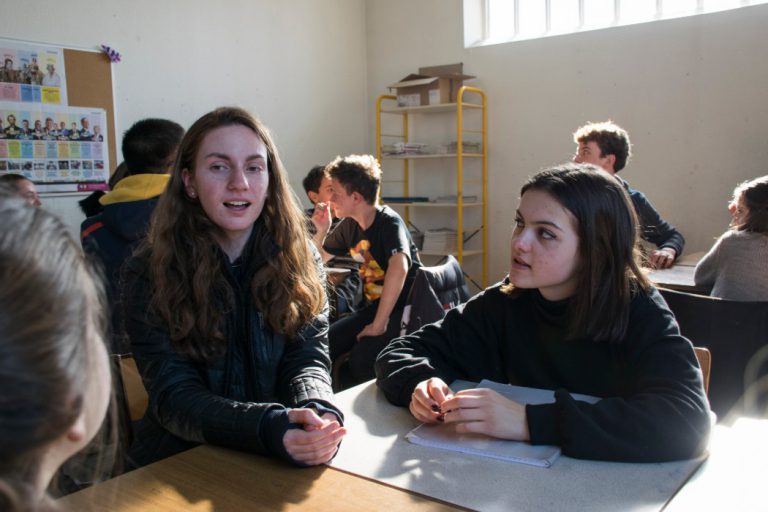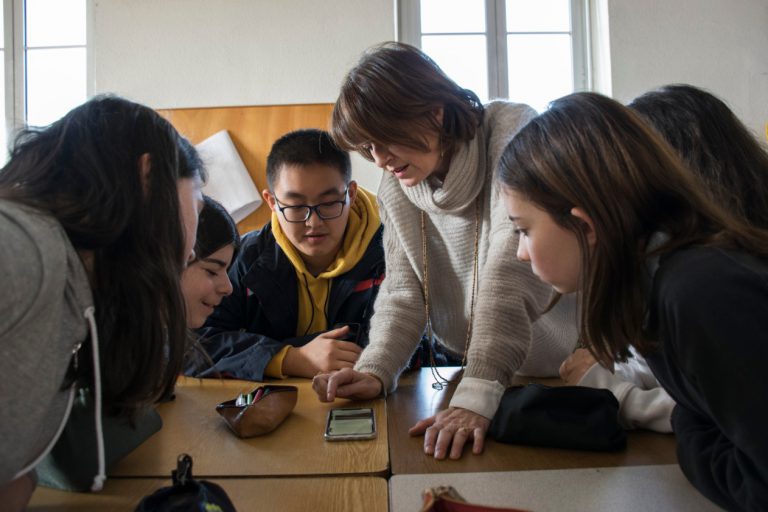Hosting exchange students can be a rewarding yet challenging experience for teachers. In this guide, we offer practical tips to ensure your school exchange program runs smoothly!
1. Preparing for Hosting Exchange Students
- Set expectations for host families: Start with the basics. Families should provide a comfortable and clean personal space for their exchange student, three meals per day, and rides to and from school and to social events.
- Discuss cultural differences: Remind families that meal times are earlier in the US than in some countries (like Spain), greetings are different in Europe than in US (in France and Spain it is common to greet someone with two kisses on the cheek, rather than a hug or a handshake, for example), etc.
- Organize planning meetings with families: Set up several meetings with the host families and students to prepare them and to brainstorm activities for the exchange students. The activities could be a picnic at a park, a barbecue or a welcoming or farewell party. Ask parent volunteers to organize these activities.
- Identify a Parent Liaison: Choose a parent that can act as a liaison between your and the other host parents. The liaison can also create a group message for parents (through SMS, GroupMe, Google Hangouts) to help facilitate easy communication between you and the other parents.

2. Engage visiting students in class
Here are some activities you can organize while hosting international exchange students on a school exchange:
- Speed Friending: Students create a list of questions for the visiting students and vice versa. Visiting students rotate from table to table in five-minute intervals. At each table, students introduce themselves, share about their life and culture and ask each other questions.
- Team Building Activities: Create teams that mix international and American students and organize a competition made up of different challenges.
- Class presentations: Give the European students time to work on a presentation for the American students about student life in their country. Students could also teach a traditional dance, organize a food tasting, or present on a current event in their country.
See our current exchange opportunities!

3. Involve the entire school community
Promote opportunities for other faculty and departments to engage with exchange students. For example:
- Visit to a middle and/or elementary school: Introduce the exchange students to the entire American educational system while also promoting language and cultural exchange at the lower grade levels in your school district.
- Class visits: Offer the opportunity for other faculty members to invite the exchange students to their classes. Classroom visit activities from past exchanges have included:
- Art – students create a piece of artwork together
- History/Geography/Government – exchange students quiz the class on the geography of their region or continent.
- Chemistry – exchange students assist the class while conducting an experiment.

4. Logistics of Hosting Exchange Students
Have your school and host families arrange some local field trips. European exchange students come to the US to experience the daily life and culture; so the activities do not need to be “over-the-top” – almost any activity or field trip in your town or city will be different from their daily life at home. If possible, work with your school to provide a bus for the day and, if you are not able to join the group, identify a parent to serve as the “Ambassador” for the group and to host them for the day.
Examples:
- Visit some public institutions like the fire station, police station, or city hall.
- Attend a school sports game or practice
- Visit any interesting nearby sights (historical monuments, natural area, botanical garden, etc.)
How can you finance those activities or excursions?:
- Collect an extra $100-$150 per participating student from your school
- Ask your school for the necessary funds
- Fundraise through the French or Spanish club (learn more in our Fundraising Ideas Guide)
- Solicit support from your local Rotary Club, Optimist Club, Kiwanis Club or Lion’s Club
- Ask local businesses to organize activities for free to promote their business (ex. chocolate workshop, whale cruise)


Leave a comment